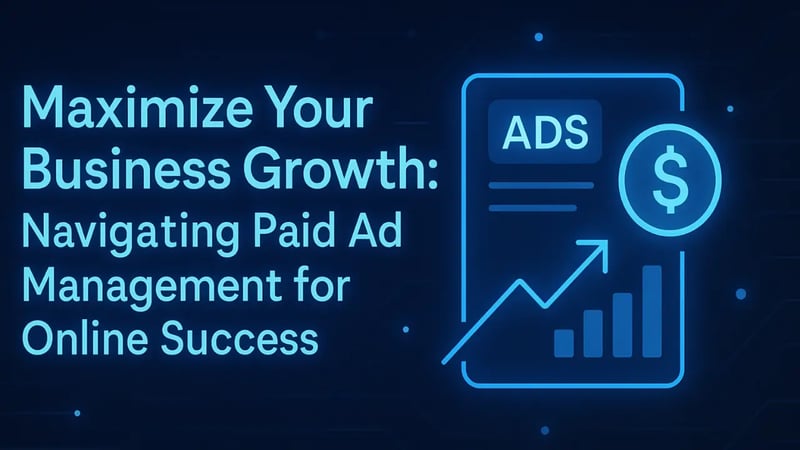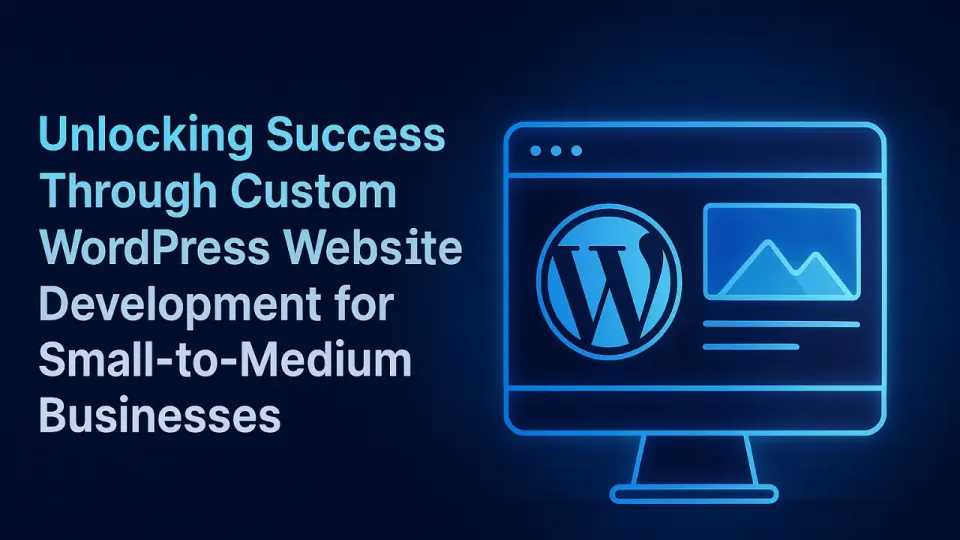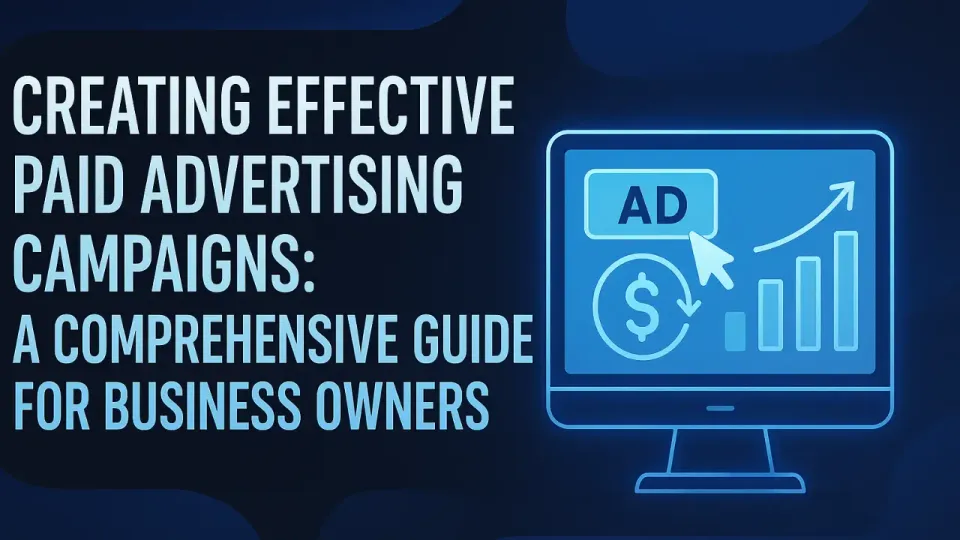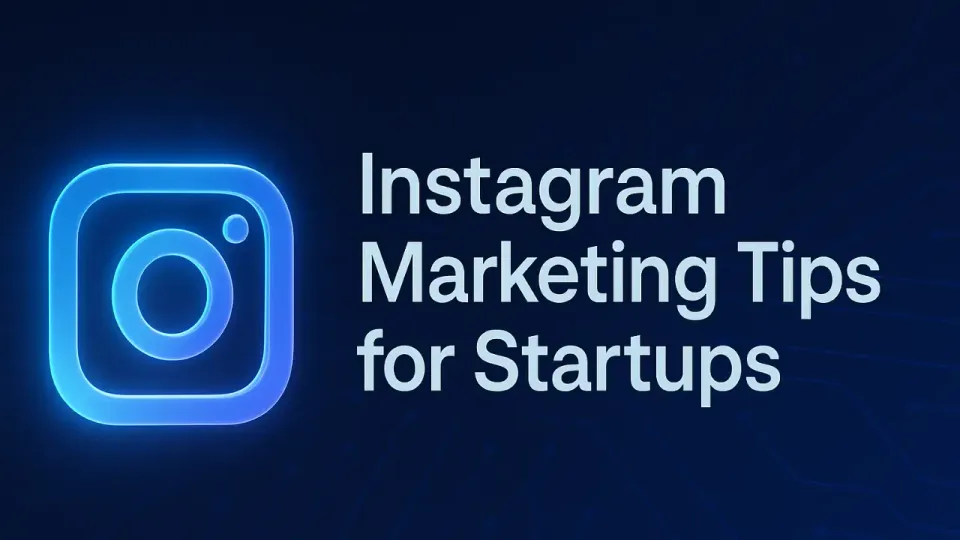Maximize Your Business Growth: Navigating Paid Ad Management for Online Success
Unlock your business’s potential by mastering paid ad management for online success! In this article, we explore personalized strategies tailored to small-to-medium business owners.

As a small-to-medium business owner or entrepreneur, you know that in today’s competitive landscape, visibility is everything. You may have an impressive product or service, but how do you ensure that potential customers find you amidst the digital noise? Enter the realm of paid ad management for online businesses.
Understanding Paid Advertising
Paid advertising is more than just a line item on your budget; it’s a strategic tool that, when effectively utilized, can propel your business to new heights. Think of paid ads as a megaphone for your business. While organic outreach is valid, sometimes you need a bit more volume to cut through the chatter.
Did you know that businesses make an average of $2 in revenue for every $1 spent on Google Ads? That’s a significant ROI that should pique your interest. But before you dive in, it’s crucial to understand how to manage this effectively.
1. Setting Clear Goals for Your Ads
Before jumps into creating ads, think critically about what you aim to achieve. Are you looking to increase brand awareness, generate leads, or push specific products? For example, a locally owned bakery in Hoover, AL, might aim for increased foot traffic during the holiday season.
- Brand Awareness: Ideal for businesses launching a new product or service.
- Lead Generation: Focus on collecting contact information for follow-up marketing.
- Sales Conversion: Direct focus on one-time purchases or membership sign-ups.
Setting concrete goals not only guides your ad strategy but also helps in measuring success over time.
2. Choosing the Right Platforms
The next step in your paid ad management journey is selecting the right platforms. Websites like Google, Facebook, and Instagram each have their strengths.
For example, Facebook ads can target potential customers based on interests, demographics, and even behaviors. If you're a local e-commerce store selling hiking gear, targeting outdoor enthusiasts on Facebook can provide massive ROI.
Consider this: over 70% of people report discovering new products on Instagram. If your target audience frequents these platforms, they may be the ideal spots for your ads.
3. Crafting Compelling Ad Content
Your ad content must resonate with your audience. Use **eye-catching visuals** and concise, persuasive language that speaks directly to your potential customers' pain points. Consider using testimonials or user-generated content to build trust.
- Use Strong CTAs (Call To Action): Encourage immediate action with phrases like, "Shop Now!" or "Join Us Today!"
- Leverage Imagery: A picture can convey emotion and prompt decision-making faster than words.
- Test Variants: A/B testing (creating different versions of your ad) helps find what truly resonates with your audience.
For instance, a local gym ran two different ad campaigns: one focusing on group classes and the other on personal training. The group class ad outperformed by 30% simply because the imagery showcased community and fun.
4. Budgeting and Monitoring Performance
Your budget for paid ad management for online businesses matters, but it’s not just about how much you can spend. It’s about how smartly you can allocate your dollars. Start with a manageable ad spend and scale up based on results. Tools like Google Ads and Facebook Insights can help you identify what’s working.
- Weekly Monitoring: Check performance regularly to catch trends early.
- Review Analytics: Understand which ads drive engagement and conversions.
- Adjust Strategy: Don’t be afraid to change your approach based on data.
Without the analytics, you’re sailing without a compass. Just like that bakery we mentioned earlier, they may find significant foot traffic increase during holiday campaigns but struggle in other months, allowing them to adjust and discover what truly drives sales.
Conclusion
Incorporating paid ad management for online businesses into your marketing strategy opens up new avenues for growth and customer engagement. By setting clear goals, choosing the right platforms, crafting compelling content, and monitoring your ad performance, you can maximize your ROI. Remember, the world of paid advertising is ever-evolving; staying informed and flexible can set your business apart from the competition.
FAQs
- What is paid ad management?
- Paid ad management refers to the process of creating, running, and optimizing paid advertising campaigns to drive traffic and conversions for online businesses.
- How do I know if my paid ads are working?
- You can assess the performance of your paid ads through metrics such as click-through rates, conversion rates, and return on investment (ROI) using analytics tools.
- What platforms should I use for paid advertising?
- Popular platforms include Google Ads for keyword-targeted marketing, Facebook Ads for demographic targeting, and Instagram for visual engagement.
- How much should I budget for paid ads?
- Start with a smaller budget that you can afford to experiment with and plan to scale as you determine what generates the best results.
- Can I manage paid ads myself?
- Yes, many businesses successfully manage their own paid ads, but if you lack the expertise, consider hiring a professional or taking an online course to learn more.
"Joining this community has been a game-changer for staying updated on the latest trends & events!" - John B.





